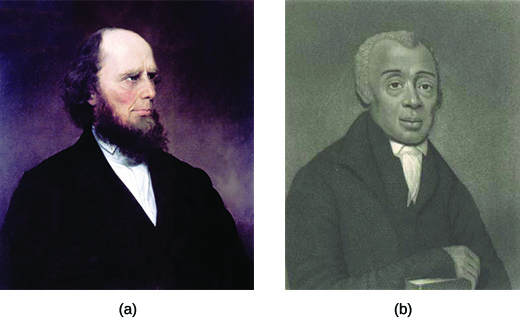| << Chapter < Page | Chapter >> Page > |
The Second Great Awakening also brought significant changes to American culture. Church membership doubled in the years between 1800 and 1835. Several new groups formed to promote and strengthen the message of religious revival. The American Bible Society, founded in 1816, distributed Bibles in an effort to ensure that every family had access to the sacred text, while the American Sunday School Union, established in 1824, focused on the religious education of children and published religious materials specifically for young readers. In 1825, the American Tract Society formed with the goal of disseminating the Protestant revival message in a flurry of publications.
Missionaries and circuit riders (ministers without a fixed congregation) brought the message of the awakening across the United States, including into the lives of slaves. The revival spurred many slaveholders to begin encouraging their slaves to become Christians. Previously, many slaveholders feared allowing their slaves to convert, due to a belief that Christians could not be enslaved and because of the fear that slaves might use Christian principles to oppose their enslavement. However, by the 1800s, Americans established a legal foundation for the enslavement of Christians. Also, by this time, slaveholders had come to believe that if slaves learned the “right” (that is, white) form of Christianity, then slaves would be more obedient and hardworking. Allowing slaves access to Christianity also served to ease the consciences of Christian slaveholders, who argued that slavery was divinely ordained, yet it was a faith that also required slaveholders to bring slaves to the “truth.” Also important to this era was the creation of African American forms of worship as well as African American churches such as the African Methodist Episcopal Church, the first independent black Protestant church in the United States. Formed in the 1790s by Richard Allen, the African Methodist Episcopal Church advanced the African American effort to express their faith apart from white Methodists ( [link] ).

In the Northeast, Presbyterian minister Charles Grandison Finney rose to prominence as one of the most important evangelicals in the movement ( [link] ). Born in 1792 in western New York, Finney studied to be a lawyer until 1821, when he experienced a religious conversion and thereafter devoted himself to revivals. He led revival meetings in New York and Pennsylvania, but his greatest success occurred after he accepted a ministry in Rochester, New York, in 1830. At the time, Rochester was a boomtown because the Erie Canal had brought a lively shipping business.
The new middle class—an outgrowth of the Industrial Revolution—embraced Finney’s message. It fit perfectly with their understanding of themselves as people shaping their own destiny. Workers also latched onto the message that they too could control their salvation, spiritually and perhaps financially as well. Western New York gained a reputation as the “burned over district,” a reference to the intense flames of religious fervor that swept the area during the Second Great Awakening.

Notification Switch
Would you like to follow the 'U.s. history' conversation and receive update notifications?